When buying an old village house, the question often arises: how is it cheaper to organize its heating? In remote villages there is no access to main gas, and electricity is periodically cut off. For the uninterrupted heating of a private house without gas and electricity, you have to look for alternative sources of heating.
Content
Ways to save thermal energy
Before deciding whether to install a new heating system or modernize an existing one, it is worth inspecting the house and reducing heat loss. Several methods have been developed for this.
Home insulation
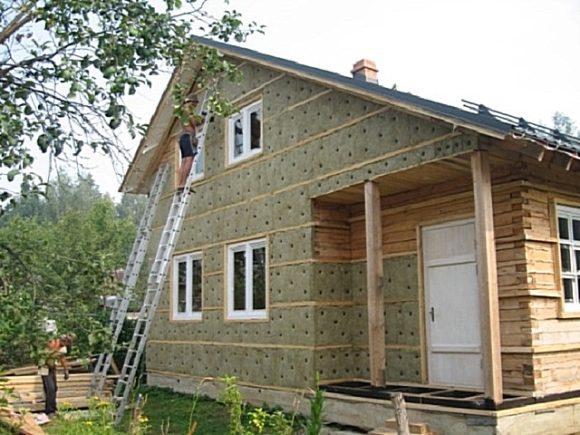
To increase the temperature in the room, it is necessary that the amount of heat received from the heating system exceeds the amount leaving the building. Therefore, the higher the heat loss of the building, the more energy the heating system of the house should give out.
When viewing the house with a thermal imager, you can clearly see on the screen how the heat leaves through the windows, walls and ceiling of the room. Therefore, to save heat in a private house, do the following:
- the attic is insulated with mineral or basalt wool. The cracks between the ceiling and walls are closed with foam;
- old wooden windows are the main source of heat loss. To remedy the situation, instead of wooden windows, plastic windows with multi-chamber profiles and thick double-glazed windows with energy-saving glasses are installed. The space between the wall of the house and the window is carefully covered with foam;
- insulation plates are hung on the walls of the house. Outside the slabs are covered with siding.
During major repairs of the house, some of the windows can be laid. This will reduce the cost of replacing wooden frames with plastic, and reduce heat loss. The negative side of the method is a decrease in the amount of light in the house.
Saving on room temperature
It makes no sense in all rooms to achieve the same temperature. By reducing the heat input to the pantries, gyms, workshops, you can save a lot of money. On the contrary, bedrooms, nurseries, showers and bathrooms require elevated temperatures.
To adjust the temperature in a particular room, regulators are installed on the heating radiators, which automatically reduce the flow of coolant to the heater when the specified temperature is reached.
By decreasing the heat supply to the individual radiators of the heating system, the total consumption of gas, electricity or firewood in the boiler for heating water is also reduced.
Savings on the ventilation system
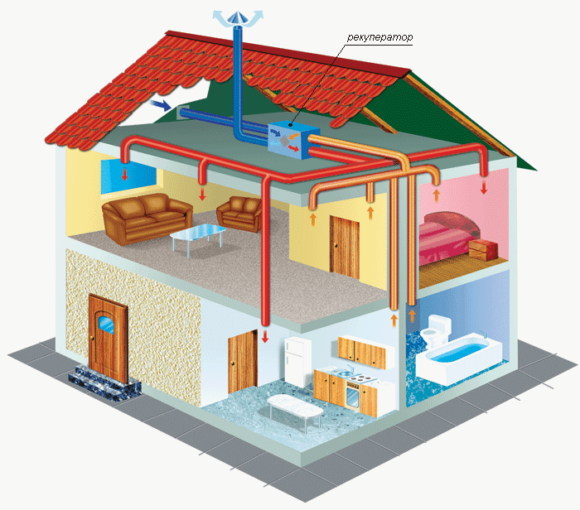
Another reserve of heat saving is the installation of a more advanced ventilation system with heat recovery. To do this, during the reconstruction of the ventilation system, heat exchangers are installed in which the outgoing warm air heats the incoming cold, which enters the room already a little warmed up.
The use of all measures to save heat saves up to 25% of the fuel necessary for heating.
House heating
In the absence of a main gas pipeline to the house and frequent interruptions in electricity, alternative sources of heating are used.
Solid fuel
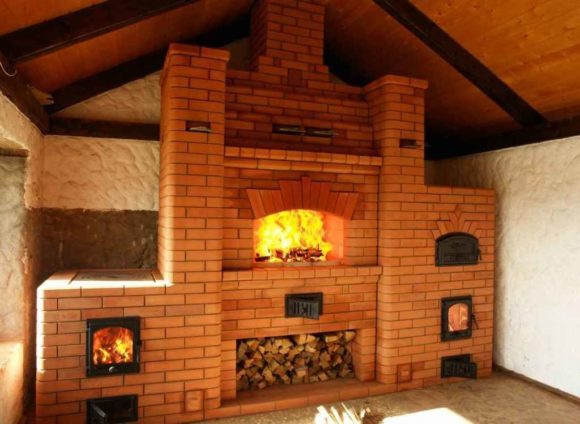
Firewood, peat briquettes, coal or pellets are used as solid fuel.
Positive aspects of using solid fuel:
- low price of firewood and peat briquettes;
- the possibility of self-cutting firewood;
- low price of stoves;
- the possibility of making brick or metal stoves with your own hands;
- the ash remaining after the furnace is used as a valuable fertilizer in the garden.
The negative aspects of using solid fuel:
- the calorific value of solid fuel is low, therefore, for uninterrupted heating during the heating season, large reserves are required;
- solid fuel burns well only in dry form, therefore, for its storage, an airtight shed, bunker or firewood is needed;
- After using solid fuel, a lot of sawdust, wood chips or dust remain in the room;
- solid fuel furnaces need daily loading;
- domestic solid fuel heating systems are not regulated by automation;
- annual maintenance and cleaning of chimneys from soot and ash is necessary;
- for operation of solid fuel heating systems, a correctly installed chimney is required;
- a lot of ash remains from the furnace, which must be removed regularly.
Liquid fuel
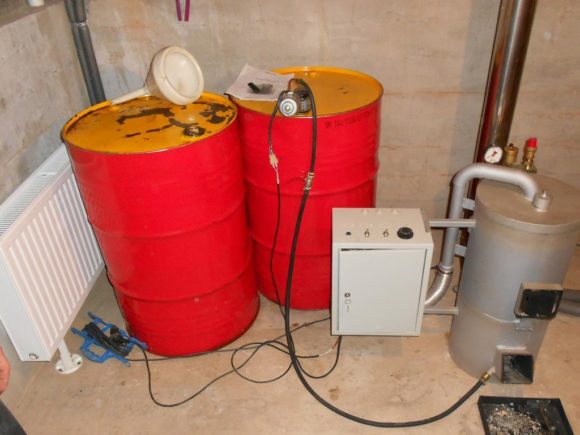
As liquid fuel, diesel fuel, kerosene, mining, vegetable oil from fast food, the remains of animal fat, crude oil are used. Furnaces are installed to heat indoor air or are used to heat the coolant in radiators.
Positive aspects of using liquid fuel:
- liquid fuel is always on sale;
- used oil can be easily and cheaply purchased at the nearest vehicle maintenance station;
- a waste oil stove is easy to make on its own;
- Liquid fuels are easy to store and transport.
Negative aspects of using liquid fuel:
- high price of diesel fuel;
- the chimney of a diesel-powered stove is quickly clogged with soot;
- liquid fuel heat generator requires periodic maintenance by specialists;
- diesel fuel has a sharp unpleasant odor; therefore, a separate non-residential premises is necessary for the operation of a liquid fuel device.
Liquefied petroleum gas
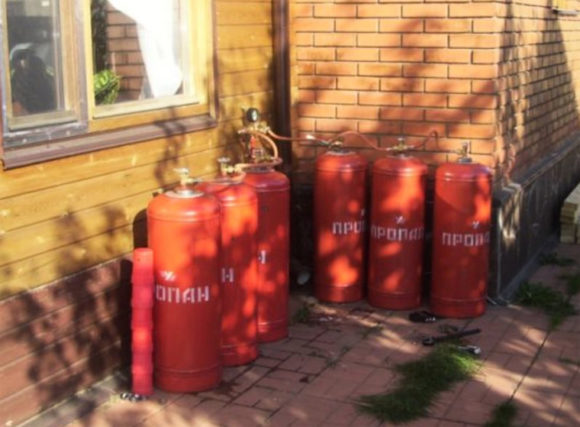
A mixture of propane and butane is used as a liquefied gas. Buy it refueling 50-liter cylinders at gas stations. As heating devices use infrared burners or conventional gas boilers.
Positive aspects of the use of liquefied gas:
- gas cylinders are easy to refuel at a gas station;
- during operation of gas heaters there is no dust and debris;
- when burning gas, no ash remains;
- when burning gas there is no soot. This eliminates the need for cleaning chimneys;
- the ability to automatically maintain the temperature in the room.
Disadvantages of using gas for heating
- the high price of filling gas cylinders;
- the summer version of the propane-butane mixture freezes in severe frosts;
- gas equipment requires periodic maintenance by gas industry specialists.
Solar heating systems
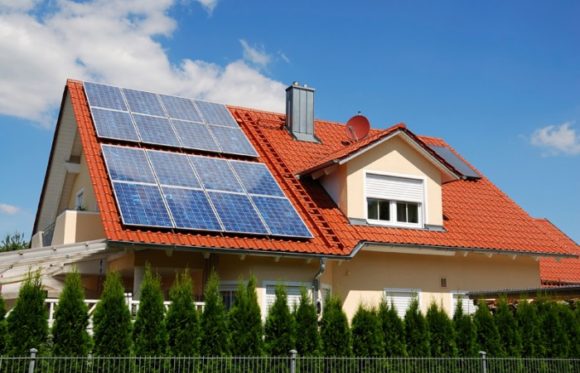
To heat a country house using solar energy, solar collectors or solar panels are used.
Solar collectors consist of a system of glass tubes with a coolant. The equipment is installed on the south side of the wall or roof of the house. During the operation of the solar collector, the coolant is heated by the sun's rays, flows into the house and gives up the accumulated energy to the interior.
Solar panels are installed on the south side of the house. When illuminated by the sun, they generate electricity, which is fed into the room via wires. Electricity heaters work from the electricity received.
Advantages of solar heating systems:
- free heating at home;
- does not require expensive regular maintenance;
- when working do not emit smoke, soot and soot;
- environmentally friendly heating system.
Disadvantages of solar heating systems:
- low system efficiency;
- in winter, there are few sunny days in the northern latitudes; the system works inefficiently;
- the system works only in the daytime, at night it cannot heat the room;
- high price of equipment.
Due to the low efficiency of solar systems in the winter, they are used for additional heating of the room, reducing the cost of heat received from the main system.
In the steppe regions of the Russian Federation, small wind farms are installed in addition to solar panels to obtain free electricity in order to heat a house.
Heating a house with a heat pump
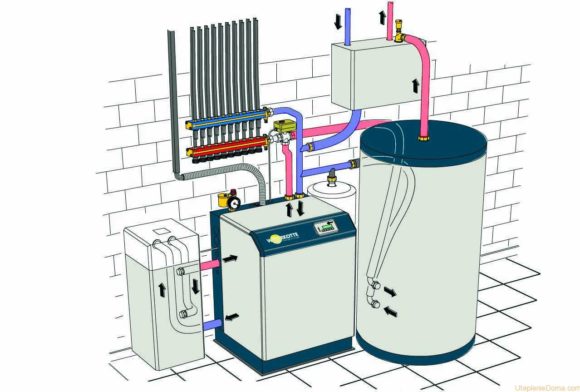
The heat pump is a pipe system with a coolant embedded inside. On one side of the system, the coolant is heated by natural energy, on the other, it cools in the radiators of a country house. The source of energy is the sun, hot water or groundwater. The system works effectively when there are nearby underground geothermal sources.
The movement of the heated coolant in the system is carried out by an electric pump and requires the constant availability of electricity.
The use of solid biofuels
Solid plant waste can be used for space heating, thereby utilizing fallen leaves, shredded branches of garden trees, and waste from woodworking enterprises (wood chips and sawdust). For this, a pyrolysis hot water boiler is installed in the room with a wiring of radiators around the house.
During operation, the loaded fuel (wood chips, foliage, firewood, branches) is heated without air. When heated, the fuel emits combustible gas (a mixture of methane, hydrogen and carbon dioxide), during the combustion of which the heat carrier is heated.
Advantages of a pyrolysis heating system:
- very low fuel price;
- lack of emission of heavy metals, sulfur, phosphorus;
- low content of CO2 in the exhaust;
- quick installation of a pyrolysis heating system;
- pyrolysis heating solves the problem of recycling gardening and woodworking waste.
Disadvantages of the pyrolysis heating system:
- high price of equipment;
- installation of the pyrolysis system should be carried out by specialists;
- To pump the coolant through the system, it is desirable to use an electric pump. The lack of a pump complicates and increases the cost of the system.
Use of gaseous biofuels
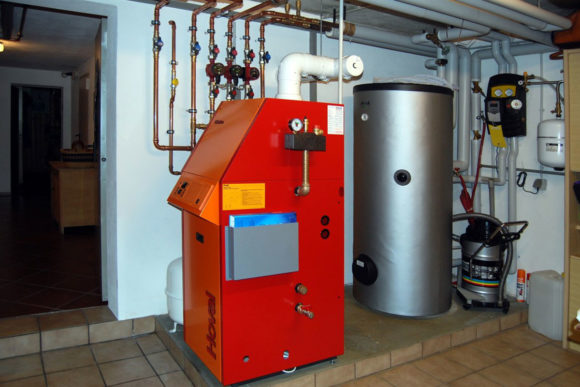
If there is a large amount of livestock waste, biogas is used to heat a country house. For this, a large capacity is installed near the premises - a bioreactor into which livestock and food industry waste is loaded and water is poured. The container with the solution is hermetically sealed and heated to 70 degrees. In the absence of air access under the influence of anaerobic bacteria, the mixture begins to actively ferment. During fermentation, combustible methane gas is released. The resulting methane is purified, fed through pipes to the burners of gas boilers. The mixture processed by bacteria is dried and used as fertilizer or fuel.
Benefits of biogas heating:
- environmentally friendly heating;
- non-waste heating;
- high plant efficiency: from 5 tons of the mixture every day for six months you can get 40 cubic meters of combustible gas.
Disadvantages of biogas heating:
- a biogas plant has a large volume and a high price;
- for uninterrupted heating requires regular supply of manure.
The use of solid fuel furnaces
In remote areas, solid fuel is most often used to warm a house without the use of gas and electricity. Coal, firewood, pressed woodworking waste, peat briquettes, etc. are used as such fuel. Fuel is burned in direct-heating stoves and fireplaces, or in heating boilers they heat the coolant that heats the room through a system of pipes and radiators.
Metal furnaces
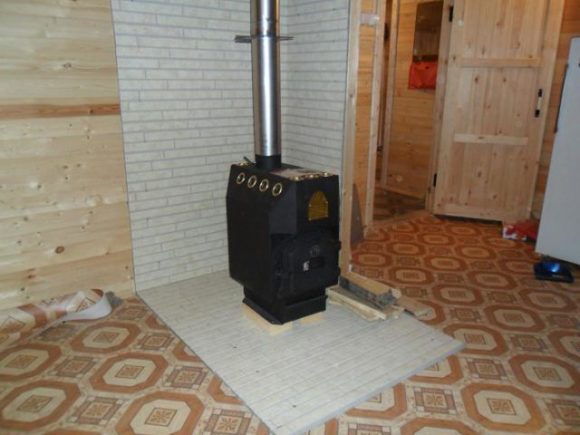
Metal stoves are a modern option for heating a country house. With their help, you can heat a large room in a short period of time. Modern furnaces are made of steel and cast iron, have a beautifully designed appearance, are equipped with glass in the door. The bulk of the metal stoves in the upper part has a stove for cooking, some models can optionally be equipped with boilers.
According to the design of the furnace can be divided into two groups.
- Long burning furnaces. Usually made of cast iron, have a large mass and a high price. One bookmark of firewood in such a stove is enough for several hours of burning.
- Furnaces for rapid heating of air. As a rule, they are made of heat resistant steel. Around the firebox of such a furnace are mounted quick-heating ambient air ducts.
Advantages of metal furnaces:
- quick heat transfer, the ability to heat a large room in a short time;
- modern furnaces for safety are equipped with protective shields. This prevents burns from accidental contact;
- the furnaces are very compact and do not require much space for installation;
- metal furnaces are lightweight and do not require additional foundations to be installed;
- a simple furnace can be made independently from ordinary sheet iron;
- quick installation of the furnace and chimneys;
- the possibility of independent installation of the furnace and chimneys.
Disadvantages of metal furnaces:
- the metal furnace cools quickly;
- it is very difficult to equip metal stoves working on coal or wood with automatic fuel supply and room temperature maintenance systems;
- stove chimneys require regular cleaning;
- when burning wood, a large volume of ash is formed, requiring regular removal;
- Thin-walled furnaces quickly burn out during heavy use.
In order for the oven to cool less, it is bricked on three sides.
Brick kilns
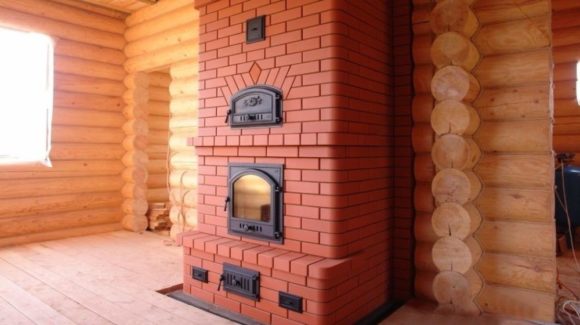
Brick stoves are a classic version of heating an apartment building. They accumulate well and give off heat for a long time. With a regular firebox, the room is always warm and dry. Over the centuries of use, many designs of brick kilns have been developed. In addition to the heating function, it is possible to cook food on the stove stove, bake bread inside the oven, and cure a sore back and dry wet things on a stove bench of the Russian oven. In small houses, the stove is installed in the center so that each of the rooms gets its own wall for heating. In large huts, five walls, a separate stove is installed in each room.
Advantages of brick kilns:
- during the furnace, ceramic brick emits healing radiant energy, giving coziness and comfort;
- brick stoves give off heat for a long time;
- low manufacturing cost of the stove;
- the possibility of self-installation of the furnace.
Disadvantages of brick kilns:
- stove chimneys require regular cleaning;
- a large brick stove warms up for a very long time;
- there is no possibility of automation of the furnace;
- when burning wood, a large volume of ash is formed, requiring regular removal;
- brick kilns during installation require a powerful foundation.
Heating oil
In each region, fuel is used for heating, which is in abundance. The classic version of the fuel is firewood and coal, but other sources of thermal energy can be used in the furnace.
Kizyak
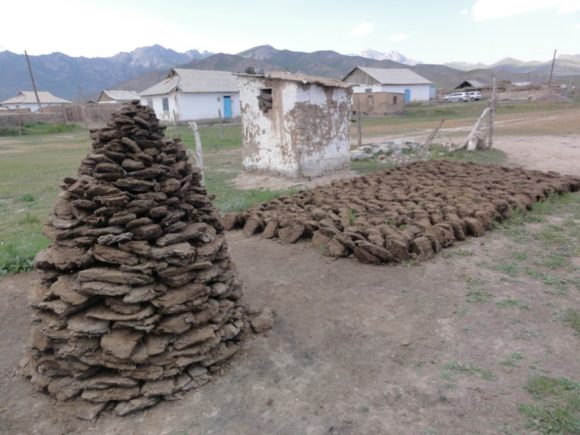
Kizyak is a briquette made from a mixture of manure and straw. The best manure is sheep, but you can use waste from any livestock or chicken droppings. To make a dung, the litter that has caked during the winter season is cut into pieces in the spring and dried in the sun.
Benefits of dung:
- the fuel burns perfectly, it can be used for long-burning furnaces;
- the possibility of self-storage of fuel;
- fuel is free.
Disadvantages of dung:
- high labor input of fuel fabrication;
- dung is afraid of moisture, so rain canopies are needed to store it;
- bad smell after burning some types of dung;
- when burning dung, ash is formed.
Peat (peat briquettes)
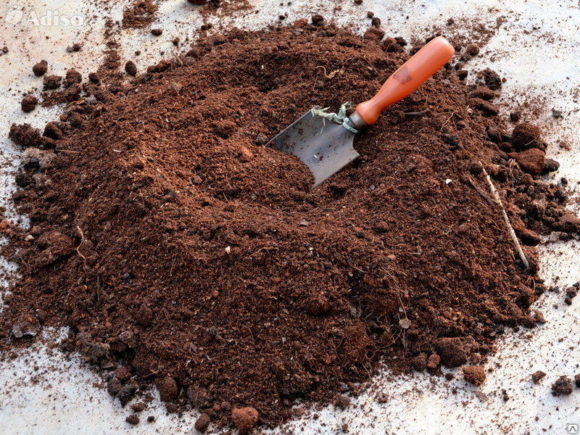
Peat briquettes are made from peat, waste from the woodworking industry (sawdust, shavings) and agriculture (straw, husk). For their manufacture, the feedstock is dried to a moisture content of 9-12% and pressed at a temperature of 200-350 degrees. Peat briquettes are used for heating industrial and residential premises, greenhouses and saunas.
Advantages of peat briquettes:
- the fuel burns perfectly, it can be used for long-burning furnaces;
- when burning peat briquettes there is no unpleasant odor;
- low price of peat briquettes.
Disadvantages of peat briquettes:
- peat briquettes are afraid of moisture. For their storage, a canopy or a barn;
- when burning peat, a large amount of ash is formed, requiring regular removal.
Firewood
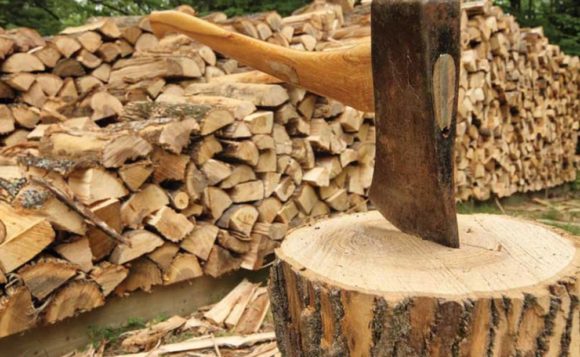
Firewood is a classic heating oil. They are available, they can cheaply heat a house without gas. The best fuel is hardwood (birch, oak), as a cheap alternative you can successfully use thick branches of trees or waste from the sawmill industry. Before use, firewood is crushed to the required length and dried.
Advantages of firewood:
- the fuel burns perfectly, it can be used for long-burning furnaces;
- low burning temperature of wood extends the service life of stoves;
- ash remaining after burning wood is an excellent fertilizer for the garden;
- the cost of heating with wood is much lower than heating with electricity, gas or diesel fuel;
- firewood can be prepared independently;
- the burning of firewood does not harm the environment.
Disadvantages of firewood:
- the high complexity of the procurement, sawing and chopping of firewood;
- when burning wood, a large amount of ash is formed, which must be constantly removed;
- firewood has a large volume. To store a supply of firewood for the winter, you need a large room closed from the top from the rain.
Coal
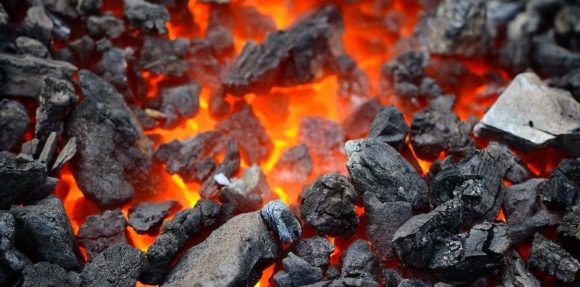
Coal has been used by mankind for thousands of years to heat a room. On sale there is lump coal and briquetted brown coal. Coal during combustion produces more heat, briquettes have a lower price.
Coal fuel benefits
- coal is the most efficient solid fuel. Most of the heat generated from its combustion;
- coal is convenient to transport and store;
- due to the high calorific value of coal for heating a house during the winter period, a small amount of coal will be required. Therefore, there is no need for large sheds for its storage.
Disadvantages of coal fuel:
- coal burns at a high temperature, so furnaces for burning it must be made of heat-resistant materials;
- when burning coal, large quantities of ash and soot are formed, which must be constantly removed;
- ash formed during coal combustion is toxic;
- when storing coal, a large amount of coal dust is formed, polluting everything around;
- during combustion, coal consumes a large amount of oxygen, so the room in which the stoves should be equipped with a high-quality ventilation system. With a lack of oxygen, the stove begins to release toxic substances into the room;
- During combustion, coal releases a large amount of harmful substances into the atmosphere.
Conclusion
For heating a private house without the use of gas and electricity, many options for heating systems have been developed - from the old Russian stove to solar collectors. It is difficult to advise on which one, the choice of the optimal system depends on the type of terrain, the availability of fuel, and its cost. The most universal solution is wood or coal stoves. Fuel for them is inexpensive and always affordable. Other heating systems are more unstable and problematic in operation.

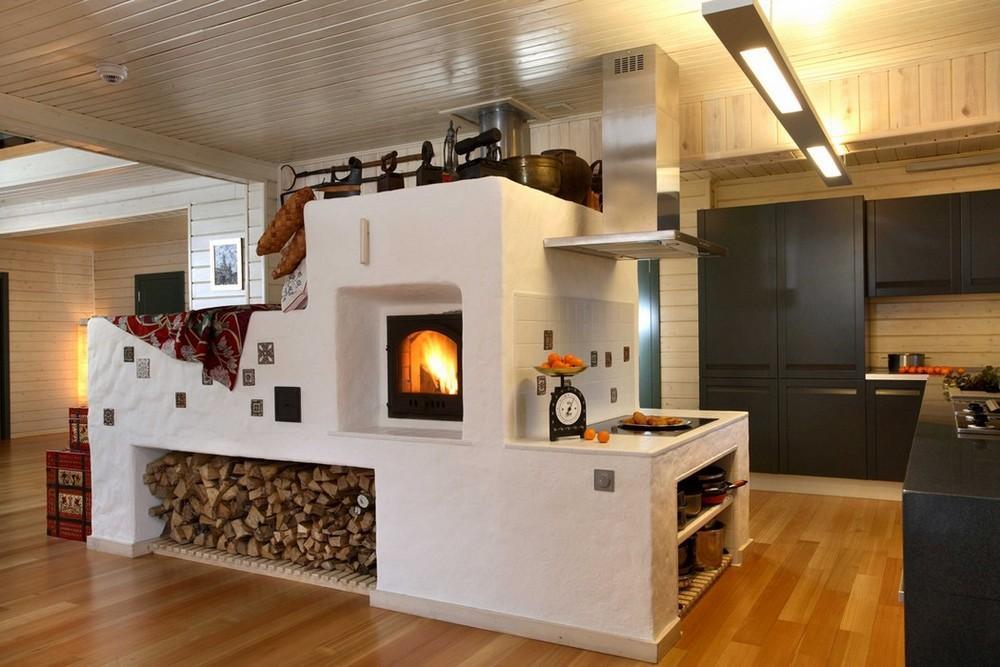
Alas, no comments yet. Be the first!